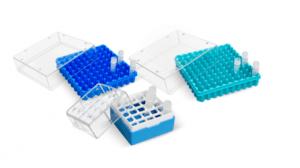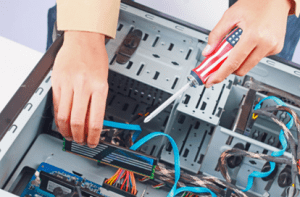4 Top Tips for an Energy Efficient Laboratory Freezer
An energy efficient freezer can make a real difference to your overall laboratory energy consumption. An energy efficient freezer is an essential appliance for the laboratory. Energy efficient freezers use less energy than traditional models. 
As we all become more conscious of our environmental impact, small changes that we can make to improve our energy efficiency are vital. With various pieces of equipment constantly running, laboratory energy consumption can be very high. Lab users should think carefully about best practices that will keep their equipment, such as laboratory freezers, running smoothly and reduce energy emissions.
In this article we outline 4 top tips for an energy efficient freezer to get the most from your ULT Freezer whilst saving energy and money.
Energy Efficient Freezer: Top Tips

1. Maximise your sample storage space
It might seem like an obvious place to start, but many lab users have wasted storage space that could be better utilised. Simple changes to the way in which samples are stored can make a huge difference and give you a more energy efficient lab freezer.
It is important to maintain regular housekeeping protocols – this ensures that users store only what they need. By doing regular inventory checks lab users can remove samples which are either no longer required or beyond their expiry date.
 Cryotubes are just one example of storage solutions that can help maximise the use of space in freezers and in turn help reduce laboratory energy consumption.
Cryotubes are just one example of storage solutions that can help maximise the use of space in freezers and in turn help reduce laboratory energy consumption.
Careful consideration should be paid to the recommended storage conditions of the sample. Often samples stored in Ultra Low Temperature (ULT) freezers can be safely stored at warmer temperatures (e.g. -40°C or -20°C). Storage temperature is often linked to the length of storage time. For example, samples requiring long term storage will likely require -86 °C or colder, whereas samples to be stored in the short term may be satisfactorily stored at warmer temperatures. By storing samples in more appropriate conditions valuable space often becomes available within the ULT.
Choosing the most appropriate inventory racking system to suit the freezer and sample type will enable tidy storage. Froilabo offers a complete range of interior equipment for use in ULTs. Using effective vial storage methods, such as cryotube holders from, will increase the number of samples that can be housed within the existing space. Lab users often find they require less ULT freezers than previously thought thanks to clever packing of the samples.
It is beneficial to consider the location or placement of samples within the freezer. Using good inventory control (clearly written labels and colour coordination, for example) and by storing the rarely used samples at the back and more frequently accessed samples at the front of the freezer sample retrieval times can be reduced. Locating samples quickly results in shorter door opening times, which will decrease laboratory energy consumption as the freezer to returns to its temperature setpoint.
2. Use the ULT as intended for an Energy Efficient Freezer
A ULT is not intended to freeze samples from room temperature or warmer. Samples must be prepared in the correct way prior to storage in a ULT. Best practice is to prepare samples for ULT storage by freezing them in a blast freezer, otherwise the chamber warms up and the compressor has to work harder to compensate. This increases laboratory energy consumption and damages the compressor reducing freezer lifetime. Blast freezers are designed to rapidly cool and freeze samples prior to ULT storage.

Froilabo’s Blast Freezers can help prepare samples to be stored in ULT Freezers.
3. Find a suitable ULT location
Depending on the organisation, the size of the premises, worldwide location and the type of work undertaken there are a number of possible locations for ULT placement. The choice is not always an easy one and the location of the ULT could have an impact on energy bills.

Many organisations locate ULTs in an area which is deemed convenient- for example in close proximity to the laboratory, but this may not always be the most energy saving location. ULTs expel heat at the rear of the freezer. In confined spaces the heat can build up and to maintain the set temperature of the chamber the freezer must work harder. Equally, some organisations may be located in naturally warmer climates, have small premises that can warm up quickly when populated or the type or work undertaken involves additional heat sources- all of which can cause the freezer to work harder and consume more energy. Locating ULTs in cool basements, away from windows, or in areas with good natural ventilation can help reduce the requirement for active cooling methods, such as air conditioning. If active cooling is required, organisations should explore whether cooling is required 24 hours a day, 7 days a week. There may be opportunities to reduce energy consumption by switching the cooling off during the night when the temperature is often naturally cooler. Froilabo recommend 20 cm of clearance at the sides and rear of the freezer to ensure good ventilation of the ULT.
4. Perform Regular Maintenance and Checks
Undertake regular maintenance of ULTs to maintain the best efficiency in terms of energy consumption. Frost and ice accumulation reduces internal space and lowers the freezers ability to remove heat from inside the chamber causing the compressor to run for longer to maintain the set temperature. Equally, the freezer filters (if present) should be kept clean. A ULT must work harder to draw air to cool the condenser if the filter is dirty and clogged. Regularly check the door seals and gaskets are in good condition to prevent warm air entering the chamber when the door is closed.

Regular service and maintenance can keep your freezer in top working order, prolonging its life cycle and minimising laboratory energy consumption.
A regular performance check is good practice as it may be possible to predict when the ULT could fail due to age. Comparing the actual temperature with the set temperature is a useful check to perform, a freezer which cannot reach the set point will be audible as the compressor will run continuously. A compressor cannot run continuously for long periods, otherwise failure occurs. Another useful measurement is the time taken to return to set point after door opening. The settle time should be approximately 10 – 15 minutes, if this is taking hours then this is of concern and the freezer should be checked by an engineer or qualified person. Froilabo offer a full range of after sales services to keep your freezer in its best condition and to help you maintain the most energy efficient lab freezer.
Find Out More
If you’d like to find out more about how Froilabo products can reduce laboratory energy consumption, or how we can help with the maintenance and repair of your Froilabo ULT Freezer please contact our sales team who will be happy to assist you.
Keep in Touch
If you’d like to hear more Top Tips from Froilabo, sign up to our newsletter below and don’t forget to follow us on LinkedIn.



